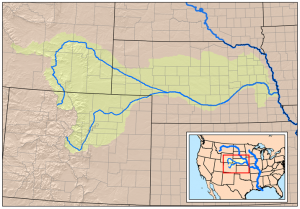Add the South Platte in the state of Colorado to my list of watersheds outside of the Colorado River Basin that I need to pay attention to in order to understand what’s happening inside the Colorado River Basin.
I’ve written here before about the linkage between the Sacramento-San Joaquin River system and the Colorado, because both are key watersheds for Southern California. The Rio Grande, where I live, is another river outside the Colorado Basin that’s integrally connected by human plumbing to what happens inside the Basin. Now a legislative discussion in the state of Colorado suggests a need for similar attention.
The South Platte flows out of the Rockies through the state of Colorado’s urbanizing Front Range communities and across the agricultural plains, providing a key water supply for both. There is a discussion underway now about adding storage on the South Platte, as Marianne Goodland explains in the Colorado Independent:
Millions of gallons of water flow into Nebraska, far exceeding the amount required under the Colorado-Nebraska compact that governs South Platte water use. And Colorado wants and needs to keep that water.
The question lawmakers have to answer now is how to store the water and more importantly, where.
Remember that this is on the other side of the Continental Divide from the Colorado River Basin. But the question of “transmountain diversions” is a hot one in the state of Colorado – should/could more water be taken from west of the divide and shipped across to the east? We already do a lot of this, but there’s pressure to do more.
Goodland’s piece raises this intriguing question – could additional storage on the South Platte increase pressure to move more water out of the Colorado River Basin, because now farms and cities on the eastern side of the divide have more places to put it?
The only opposition to Brown’s bill came from Trout Unlimited’s David Nickum, who said he sympathized with Western Slope residents who fear the water shortfall will require more diversions of mountain water into the Front Range….
The fear of another transmountain diversion prompted concerns from Rep. Diane Mitsch-Bush, a Steamboat Springs Democrat. She proposed an amendment to ensure the study wouldn’t look at mountain water as a way to fill a South Platte reservoir.
We’ve built at artificially vast watershed. I guess I need to start paying attention to water management on the South Platte, too.


Yes, Pat Mulroy talked with Aurora Water years ago. There are a few drawbacks that hopefully the study resolves. Then Governor Dick Lamm backed off when no one would guarantee that it actually would hold water, and it wouldn’t be subject to breaching. There’s also the issue of a feedback loop. Presently discharge goes merrily on its way. During low flow periods it can be above standards at the Nebraska State Line. A mainstem dam is going to accumulate anything from heavy metals to organics. It will cost the Front Range big bucks to bring their treatment plants up to date, and to operate. There are some hidden costs that no one cares to address.